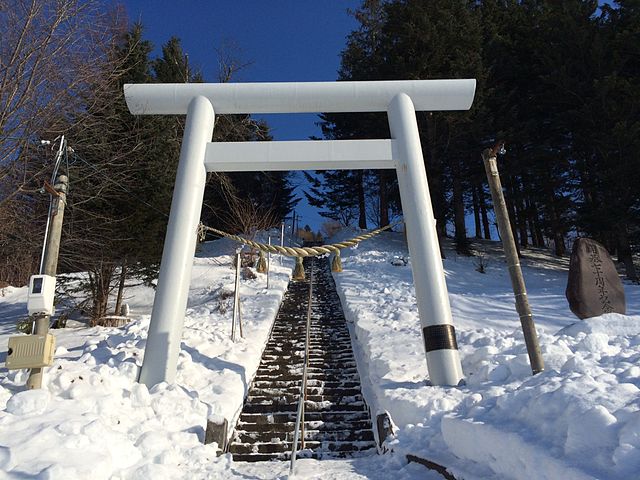In Japanese religion, Yahata formerly in Shinto and later commonly known as Hachiman is the syncretic divinity of archery and war, incorporating elements from both Shinto and Buddhism.
The Shinto deity Hachiman (Kamakura period 1326) at Tokyo National Museum (Lent by Akana Hachimangū), Important Cultural Property
Usa Shrine, at Usa in Oita Prefecture dedicated to Hachiman, founder and patron deity of this city
The Buddhist Sogyō Hachiman depicted in the attire of a Buddhist monk, syncretised from the Shinto deity Hachiman
This is a katana forged by Jirotaro Naokatsu in 1838 of the Edo period, and the words Hachiman Daibosatsu (Great Bodhisattva Hachiman) are engraved on the blade.
Shinto is a religion originating from Japan. Classified as an East Asian religion by scholars of religion, its practitioners often regard it as Japan's indigenous religion and as a nature religion. Scholars sometimes call its practitioners Shintoists, although adherents rarely use that term themselves. There is no central authority in control of Shinto, with much diversity of belief and practice evident among practitioners.
The torii gateway to the Itsukushima Shrine in Hiroshima Prefecture, Japan, one of the most famous examples in the country. Torii mark the entrance to Shinto shrines and are recognizable symbols of the religion.
A torii gateway to the Yobito Shrine (Yobito-jinja) in Abashiri City, Hokkaido
A torii gate at the Takachiho-gawara shrine near Kirishima, Kagoshima Prefecture, which is associated with the mythological tale of Ninigi-no-Mikoto's descent to earth.
An artistic depiction by Utagawa Kuniyoshi of the kami Inari appearing to a man








